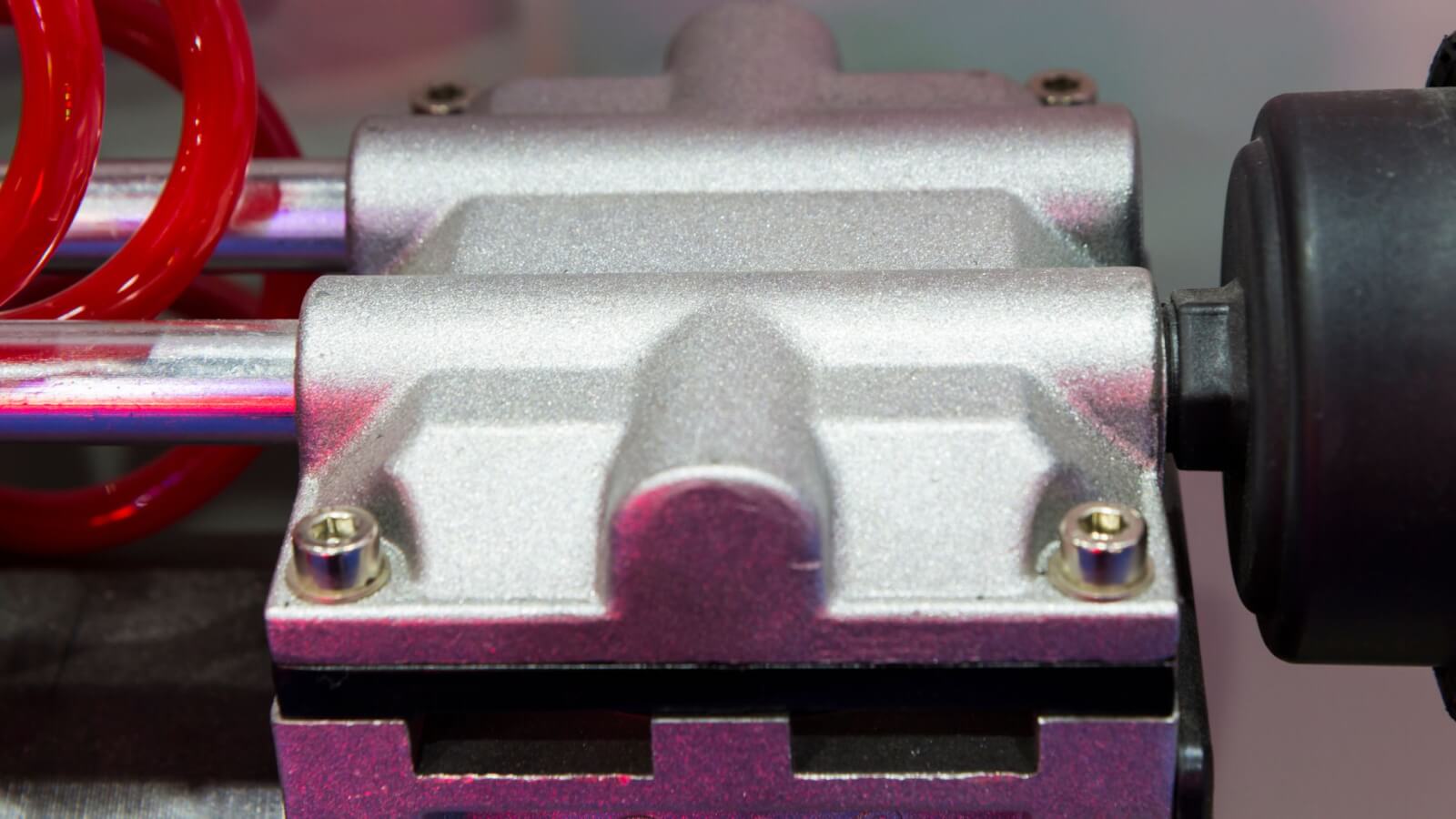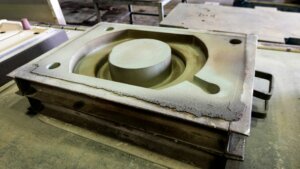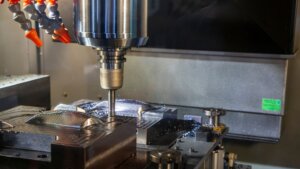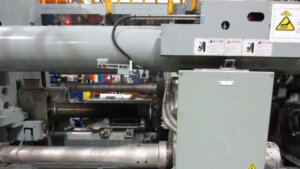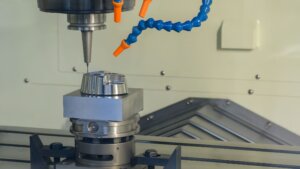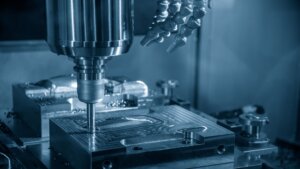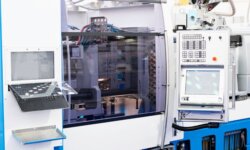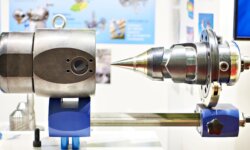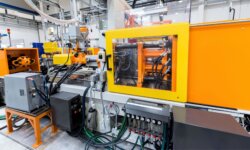Injection molding and urethane casting posses unique attributes and applications, shaping the world of production in distinct ways.
Injection molding, a method known for its precision and efficiency in mass production of plastic products, contrasts sharply with urethane casting, celebrated for its flexibility and suitability for low-volume production
This article delves into the depths of these two methods, illuminating their differences, advantages, and applications, guiding you through a detailed comparison to aid in choosing the right technique for your manufacturing needs.
Urethane casting vs injection molding: What are the Differences
At their core, these manufacturing processes diverge in their approach to material manipulation and end-product creation. Injection molding, a stalwart in the manufacturing realm, excels in high-volume production of plastic parts. It involves the high-pressure injection of molten plastic into rigid, typically metal molds.
Conversely, urethane casting, a process often allied with flexibility and customization, employs a softer approach. Here, liquid urethane resins are poured into silicone molds, creating parts that benefit from the mold’s elasticity and the resin’s versatile properties.
What is Urethane Casting?
Urethane casting, a cornerstone in the world of rapid prototyping and low-volume production, is a process where urethane resins are cast in liquid silicone molds. This technique is celebrated for its ability to quickly produce parts that closely mimic those made by injection molding, yet with a significantly reduced lead time and tooling cost. It thrives in scenarios where flexibility, material diversity, and intricate designs are paramount.
- Design and Master Pattern Creation: The journey begins with a detailed design, often materialized through 3D printing or CNC machining, to create a master pattern.
- Mold Making: This master pattern is then used to craft a silicone mold, a flexible and less labor-intensive process compared to metal tooling.
- Pouring the Resin: Urethane resin, chosen for its desired physical properties, is then poured into the silicone mold.
- Curing and Post-Processing: Once cured, the urethane part is removed and may undergo various post-processing steps to achieve the required finish.
- Final Inspection and Delivery: The part is inspected for quality assurance, ensuring it meets the specified tolerances and design requirements.
What is Injection Molding?
In the realm of manufacturing, injection molding stands as a bastion of durable high-volume, high-efficiency production. Primarily used for plastic materials, this process involves injecting molten plastic under high pressure into metal molds. It is a process renowned for its precision, speed, and ability to produce parts with complex geometries and tight tolerances.
- Tooling and Mold Design: The process starts with designing and manufacturing a metal injection mold, typically crafted from steel or aluminum.
- Material Selection and Preparation: The chosen plastic material, often in pellet form, is prepared for the injection process.
- Melting and Injection: These pellets are melted and then injected into the mold cavity under high pressure.
- Cooling and Solidification: Post-injection, the material cools and solidifies within the mold, adopting its shape and intricacies.
- Ejection and Post-Processing: The solidified part is ejected from the mold and may undergo additional finishing processes to meet the desired quality and specifications.
- Quality Control: Each part is scrutinized to ensure it adheres to the predefined tolerances and quality standards.
What Are the Advantages and Disadvantages of Urethane Casting?
In this section, we will examine the benefits and drawbacks of urethane casting, particularly in its juxtaposition with injection molding, to provide a comprehensive understanding for manufacturers and designers alike.
Advantages of Urethane Casting compared to Injection Molding
Urethane casting, known for its agility in the manufacturing world, brings forth a suite of advantages, particularly when contrasted with the more rigid process of injection molding. These benefits cater to specific needs in production, offering solutions where traditional methods may falter.
- Flexibility in Material and Design: Urethane casting excels in producing complex geometries and intricate details, which might be challenging or cost-prohibitive with injection molding.
- Reduced Tooling Costs: The use of silicone molds in urethane casting significantly lowers the initial tooling costs, making it an economically viable option for prototypes and low-volume production.
- Rapid Prototyping: This method shines in rapid prototyping, delivering high-quality parts swiftly, thus accelerating the product development process.
- Customization and Variety: Urethane resins offer a wide range of physical properties, enabling customization that injection molding might not easily accommodate.
- Shorter Lead Times: Urethane casting typically has shorter lead times, providing a quick turnaround for projects with tight schedules.
- Quality and Aesthetics: The process can produce parts with excellent surface finishes and details, often matching the quality of injection-molded parts.
- Suitability for Low-Volume Production: Ideal for producing small quantities, urethane casting is cost-effective for low-volume runs, avoiding the high costs associated with injection mold tooling.
Disadvantages of Urethane Casting compared to Injection Molding
While urethane casting presents numerous advantages, it also comes with its set of drawbacks, particularly when assessed alongside injection molding. These disadvantages need careful consideration to determine the best manufacturing process for a given application.
- Limited Production Volume: Urethane casting is not suited for high-volume production, as the silicone molds wear out quicker than metal molds used in injection molding.
- Material Restrictions: Certain materials may not be compatible with urethane casting, limiting the range of physical properties achievable compared to the variety offered by injection molding.
- Inconsistencies in Larger Batches: Producing larger quantities can lead to inconsistencies in quality and dimensions, a challenge less prevalent in injection molding.
- Higher Per-Unit Cost for Larger Volumes: While cost-effective for low volumes, the per-unit cost of urethane cast parts can become less competitive as the quantity increases, unlike injection molding where the cost per unit decreases with volume.
- Durability of Molds: The silicone molds used in urethane casting have a shorter lifespan and may degrade over time, impacting the long-term feasibility for ongoing production runs.
- Post-Processing Requirements: Urethane cast parts may require additional finishing work to achieve the desired surface quality, adding time and cost to the production process.
What Are the Advantages and Disadvantages of Injection Molding?
Now, it’s time to provide a clearer understanding of why and when injection molding is the preferred choice over urethane casting, and conversely, where it might fall short.
Advantages of Injection Molding compared to Urethane Casting
Injection molding has carved out a robust niche in the manufacturing world, thanks to its specific advantages, especially when pitted against urethane casting. These benefits span from economic to technical aspects, underpinning its widespread adoption in various industries.
- Economies of Scale: One of the most significant advantages of injection molding is its cost-effectiveness at high volumes. The per-unit cost diminishes significantly as production numbers increase, making it ideal for mass production.
- Consistent Quality and Precision: Injection molding excels in producing parts with consistent quality and tight tolerances, which is vital for complex or intricate designs.
- Material Diversity: This method can handle a wide range of plastic materials, offering greater flexibility in terms of material properties and application.
- Faster Production Cycle: Once the mold is prepared, injection molding can produce parts at a high speed, significantly reducing lead times compared to urethane casting.
- Strength and Durability: Injection molded parts tend to have superior strength and durability, thanks to the pressure and heat involved in the process, which ensures better material flow and filling of the mold cavity.
- Ability to Produce Large Volumes: Injection molding is the go-to choice for producing large quantities of parts, with capabilities far exceeding that of urethane casting in terms of volume.
- Reduced Waste: The process often results in less material waste, as excess plastic can be recycled and reused in subsequent cycles.
Disadvantages of Injection Molding compared to Urethane Casting
Despite its numerous advantages, injection molding also comes with certain limitations, particularly when compared with the flexibility and low-volume efficiency of urethane casting.
- High Initial Costs: The initial costs for creating metal injection molds can be significantly higher than silicone molds used in urethane casting, making it less economical for small production runs.
- Longer Setup Time: The time required to design and manufacture the injection molds can lead to longer lead times initially, which is less ideal for rapid prototyping.
- Limited to Simpler Geometries: Complex designs with undercuts or intricate details might be challenging or more expensive to produce with injection molding.
- Less Flexibility for Design Changes: Once an injection mold is made, making design changes can be costly and time-consuming.
- Environmental Concerns: Although plastic waste is reduced, the energy consumption and potential for non-recyclable waste are environmental factors to consider in injection molding.
How Do Injection Molding and Urethane Casting Compare in Details?
Understanding the nuances in cost, material selection, and production capabilities is crucial for manufacturers and designers as they navigate the complex decisions inherent in bringing a product to life.
Costs
The cost factor in manufacturing is a multi-faceted consideration, significantly influencing the choice between the injection molding process and urethane casting. Each process has its financial dynamics, shaped by factors like volume, complexity, and material choice.
Material Costs
When comparing the difference in material costs between urethane casting and injection molding, several key factors emerge:
- Injection Molding: This process often uses thermoplastics, which vary in cost depending on the type of plastic used. The economies of scale can play a crucial role here; higher volumes typically drive down the cost per unit.
- Urethane Casting: Silicone molds used in urethane casting generally incur lower initial costs than metal molds for injection molding. However, the urethane resins used can vary in price, influenced by the properties required for the final product.
Per Part Cost
Delving into the per-part cost unveils more about the economic landscape of these processes:
- Injection Molding: For high volume production, injection molding can be cost-effective. For instance, producing 10,000 units of a standard plastic gear might cost around $1.50 per unit.
- Urethane Casting: In contrast, urethane casting is more suited for low to medium volume production. Producing the same plastic gear in volumes of 500 might cost about $3.00 per unit. However, this cost can increase or decrease depending on the complexity and the material used.
Required Tooling and Cost
The tooling requirements and associated costs for injection molding and urethane casting vary significantly, influencing the choice between these two processes.
- Plastic injection molding necessitates the creation of robust, typically metal molds. The costs can be substantial, especially for complex designs, due to the precision and durability required. An injection molding tool, although expensive, is long-lasting and suitable for high-volume production.
- Urethane Casting: In contrast, urethane casting process employs silicone molds, which are less costly to produce. These molds are ideal for short runs and prototypes but have a limited lifespan compared to metal molds. The cost-effectiveness of urethane casting is most pronounced in low-volume production where the high tooling costs of injection molding are not justified.
Lead Times
The lead times for injection molding and urethane casting can vary based on the complexity of the project and the volume of parts required.
- Injection Molding: Lead times can be longer, particularly during the tooling phase. For a simple part, the lead time might range from 4 to 6 weeks, while more complex parts could take 8 to 12 weeks or more.
- Urethane Casting: This process generally offers shorter lead times, making it advantageous for rapid prototyping and urgent projects. Simple parts can be produced in as little as 1 to 2 weeks, and more complex designs might take 3 to 4 weeks.
Tolerances
Tolerances are a critical aspect of any manufacturing process, directly impacting the precision and consistency of the produced parts.
- Injection Molding: This process is known for achieving tight tolerances, typically within 0.005 inches (0.127 mm). The precision of injection molding tolerances is suited for parts that require exact specifications and consistent replication.
- Urethane Casting: While urethane casting can achieve good tolerances, it generally does not match the precision of injection molding. Average tolerances for urethane casting are around 0.01 inches (0.25 mm), suitable for many applications but not ideal for parts requiring ultra-high precision.
Overall Part Quality
The quality of the final product is paramount, and both injection molding and urethane casting have their merits and limitations in this regard.
- Injection Molding: Known for its high-quality finish, injection molding produces parts with excellent surface details and consistency. The strength and durability of injection molded parts are well-suited for functional components and high-wear applications.
- Urethane Casting: This process also yields high-quality parts with good surface finishes. Urethane casting is particularly effective for producing parts with complex geometries and intricate details that might be challenging or cost-prohibitive in injection molding.
Size of Parts
The size of parts that can be efficiently produced by injection molding and urethane casting varies, highlighting the unique suitability of each process for different project requirements.
- Injection Molding: This process is typically optimized for manufacturing large quantities of small to medium-sized parts. While it is possible to produce larger parts, the complexity and cost increase substantially. The limitations are often due to the size of the injection molding machines and the challenges in maintaining consistent material flow and quality in larger molds.
- Urethane Casting: In contrast, urethane casting offers more flexibility in producing larger parts or parts with unusual sizes. The silicone molds used in this process can accommodate larger and more irregular shapes more easily than rigid metal molds. However, the size of the part still significantly impacts the cost and feasibility of the process. Larger parts require more material and can complicate the casting process, potentially affecting the overall quality and consistency.
Mold Longevity and Maintenance
The lifespan and maintenance requirements of molds used in injection molding and urethane casting differ considerably, influencing the long-term cost and feasibility of each process.
- Injection Molding: Metal molds used in injection molding are known for their durability. They can produce a large number of parts before needing replacement or significant maintenance. This longevity makes injection molding more cost-effective for high-volume production runs. However, the initial cost of these molds is higher, and maintaining them can require specialized skills.
- Urethane Casting molds, on the other hand, have a more limited lifespan. They can degrade after producing a certain number of parts, which can vary based on the complexity of the part and the casting material used. This degradation affects the long-term feasibility of using urethane casting for ongoing production, particularly for higher volume needs.
Wall Thickness
The capability needed to achieve specific wall thicknesses is a critical aspect of both injection molding and urethane casting, impacting the strength and functionality of the final product.
- Injection Molding: This process can reliably produce parts with wall thicknesses ranging typically from 0.5 mm (0.02 inches) to 4 mm (0.16 inches). The precision of injection molding allows for consistent wall thickness across large production runs, which is essential for parts that require structural integrity and uniformity.
- Urethane Casting: Urethane casting also offers a range of wall thicknesses, generally between 1 mm (0.04 inches) and 5 mm (0.20 inches). While there is some flexibility in wall thickness with urethane casting, achieving uniformity can be more challenging than in injection molding, particularly for larger or more complex parts.
Undercuts
The concept of undercuts in manufacturing is pivotal, especially when comparing injection molding and urethane casting, as it directly impacts mold design and part ejection.
- Injection Molding: Handling undercuts in injection molding can be challenging. The rigid nature of metal molds means that undercuts often require complex mold designs with movable sections, such as slides or lifters, to release the part without damage. This complexity can increase the cost and lead time for mold production.
- Urethane Casting: Urethane casting, with its use of flexible silicone molds, can accommodate undercuts more easily. The elasticity of silicone allows for the mold to flex and release parts with undercuts without the need for complex mold mechanisms. This feature makes urethane casting a more suitable option for parts with intricate designs and undercuts.
Production Volume
The suitability of injection molding and urethane casting varies significantly with the production volume, influencing the choice between these two methods.
- Injection Molding: This process is ideal for high-volume production. The durability of metal molds and the fast cycle times of injection molding make it cost-effective for producing thousands to millions of parts.
- Urethane Casting: Conversely, urethane casting is more suited for low to medium-volume production. The shorter lifespan of silicone molds and the slower production rate make this method less economical for large-scale manufacturing.
Surface Finish and Aesthetics
The quality of the surface finish and the aesthetic appeal of the final product are crucial factors in the selection of a manufacturing methods.
- Injection Molding: Injection molding is known for providing excellent surface finishes. The process allows for textures and colors to be incorporated directly into the mold, resulting in parts with high-quality finishes and precise detailing. The smooth surface finish is achieved due to the high pressure used, ensuring the molten material conforms closely to the mold’s surface.
- Urethane Casting: Urethane casting is also capable of achieving high-quality surface finishes. While the basic finish of urethane cast parts is generally good, achieving a surface quality on par with injection molding might require additional post-production work, such as painting or surface treatments. This extra effort can impact the overall cost and lead time of the project.
What are the Similarities Between Injection Molding and Urethane Casting?
Despite their differences, injection molding and urethane casting share some fundamental similarities that make them both valuable in the field of manufacturing:
- Versatility in Material Selection: Both processes allow for a wide range of materials, catering to varied product requirements and specifications.
- Complex Part Design: Each technique is capable of producing parts with complex geometries and intricate details.
- High-Quality Surface Finishes: Both injection molding and urethane casting can achieve excellent surface finishes, making them suitable for visible and aesthetic components.
Conclusion
Injection molding and urethane casting, while different in their approach, share common ground in material versatility, the ability to create complex designs, and achieving high-quality surface finishes. The choice between these two processes should be guided by the specific needs of the project, including volume, cost, and the level of detail required.
At 3ERP, we excel in providing cutting-edge manufacturing services. Our injection molding services include high-quality prototype moldings from rapid tooling in aluminum or soft steel, offering quick turnaround times of as little as 7 days. We handle various challenges, such as tight tolerances, thin walls, and complex geometries, with standard lead times of 7 days for simple parts measuring 0.5 in. x 0.5 in. to 4 in. x 3 in.
In addition, our urethane vacuum casting services are adept at vacuum casting and silicone molding, providing up to 20 parts in 15 days or less, depending on the specifics of the part and volume required. With our expertise in both injection molding and urethane casting, we cater to a wide range of manufacturing needs, ensuring high-quality, cost-efficient, and swift production solutions.
